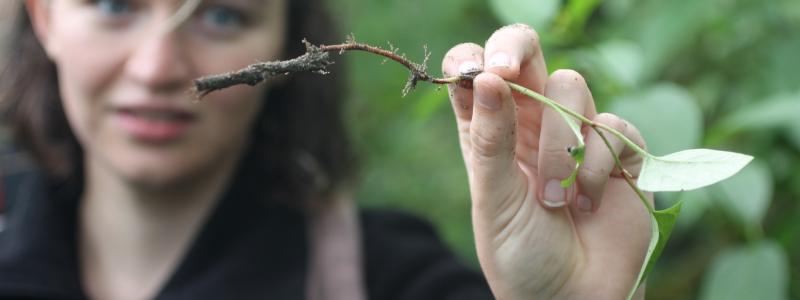One year ago, Dr. David Clements applied for a national research grant to study the spread of invasive weed species under increased temperatures and flooding caused by climate change.
As it turned out, it would be a very timely topic.
Shortly after he submitted his research proposal in November, record rainfall hit B.C., causing severe and widespread flooding in parts of the Lower Mainland.
“My research…is counting the cost of the November 2021 floods—even though I did not know these record floods would happen when I submitted the proposal,” Dr. Clements, Professor of Biology, shared.
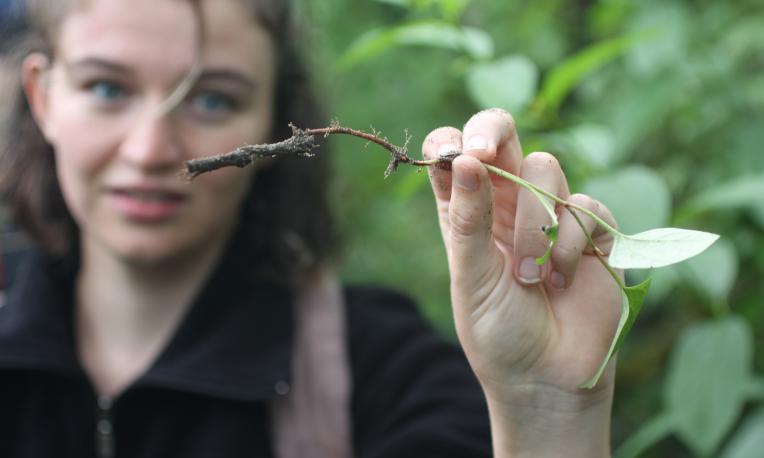
This past spring, Dr. Clements’ project, titled, “Will increased temperatures and flooding under climate change escalate invasion in riparian habitats?” received $30,000 in funding from the Natural Sciences and Engineering Research Council of Canada (NSERC). He and a team of TWU student researchers began their work this past summer and have made considerable progress.
Five TWU undergraduate students participated in the [knotweed] surveying as research assistants...Together, they tracked the spread of invasive knotweed.
The goal of their research, Dr. Clements summarizes, is to “develop a better understanding of how knotweed spreads, what areas are most vulnerable, and to justify greater efforts to control this highly invasive plant species—one of the worst invasive species in B.C.”
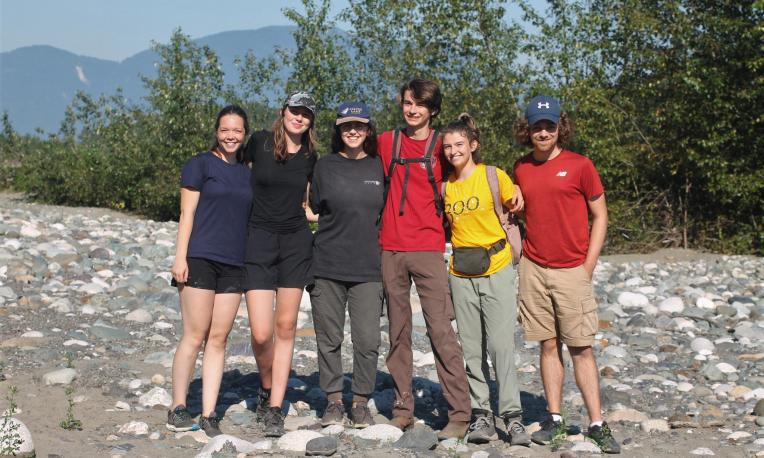
Costly natural disaster linked to climate change
Dr. Clements recalls that the floods caused crippling damage to B.C.’s agriculture and infrastructure, and represented the costliest natural disaster ever seen in B.C. The floods of 2021 have been linked to a changing climate, he notes, and match with the prediction of more extreme weather events under climate change.
The record-breaking floods of last year resulted in far-reaching consequences. The fallout that Dr. Clements and his team are tracking is the increased spread of the invasive plant, knotweed (Reynoutria species). A worldwide problem, knotweed is notoriously hard to remove and spreads aggressively, threatening local native plant life and causing serious damage to urban infrastructure.
Dr. Clements and his team’s main research site is the Vedder-Chilliwack River, just east of the Sumas Prairie between Chilliwack and Abbotsford, which suffered some of the severest losses in the B.C. flooding. The Chilliwack River’s fast-flowing waters support large salmon populations; therefore, the health of its riverbanks, including the spread of knotweed, affects multiple ecosystems.
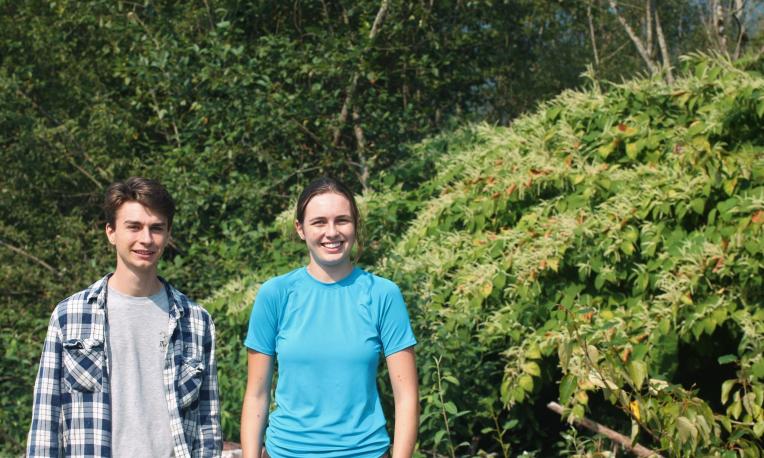
TWU students participate as research assistants
Beginning in May, the team began surveying the river and its tributaries, which runs from Chilliwack Lake near the U.S. border to the Fraser River. Five TWU undergraduate students participated in the surveying as research assistants: Sarah Demian, Hannah Munnalall, Jaylene Braithwaite, Lauren Mckenna, and Aidan Anderson. Benett ImBeau, a student research assistant from another project, joined the team for part of the work.
Together, they tracked the spread of invasive knotweed.
“A knotweed survey was overseen by the Fraser Valley Invasive Species Society (FVISS) in 2019, so our objective was to see whether the knotweed had spread further over the past three years, and especially to see if it was evident the flooding of November 2021 had increased the number of patches,” Dr. Clements explained.
“We worked with FVISS extensively to develop our methods, and FVISS and other stakeholders are very interested in seeing our results,” he continued.
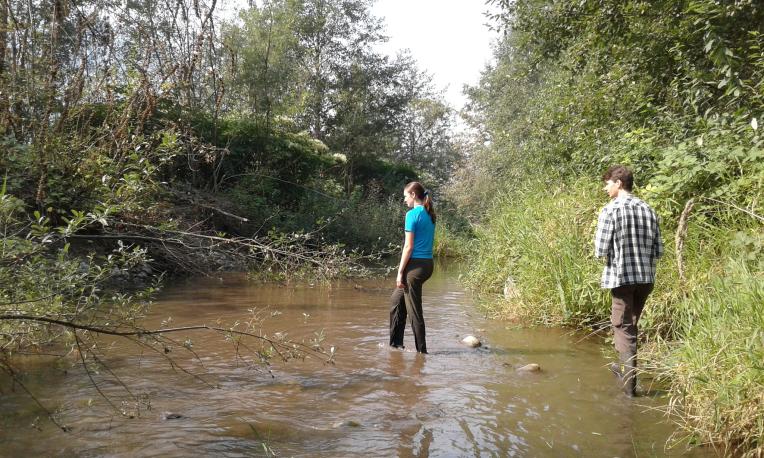
Tracking the spread
In the summer of 2022, the team mapped more than 1,000 patches. This number is up from about 300 patches in 2019.
Although many of the patches the team mapped using GPS (Global Positioning Systems) consisted of relatively small or few plants, this indicates that the flood had likely spread numerous knotweed plants via rhizome fragments—meaning the small patches may eventually become bigger patches.
The research team divvyed up their tasks. One of the researchers, Anderson, spearheaded mapping of knotweed on the river’s tributaries to help indicate which tributaries are of greatest concern for spreading knotweed into the river. Demian is analyzing the river data and evaluating the spread in light of climate change. Munnalall had already done work on growth from rhizomes immersed in water for various durations, and the survey work validated her finding that water immersion increases recruitment of new plants. McKenna collected hundreds of knotweed leaves during the survey and has begun DNA analysis to help determine how patterns of spread may relate to different knotweed strains or species. There are three major knotweed species, but the hybrid species Bohemian knotweed is of greatest concern because of its high genetic diversity. Braithwaite is examining how microsite characteristics affect knotweed establishment after flooding, and will continue her study next summer, taking numerous measurements of the substrate, shade conditions and associated plant communities along the river.
Sharing scientific knowledge through art
In addition to this project, Dr. Clements is also working on another interdisciplinary project in partnership with TWU’s Art + Design department.
Their joint project, funded by the Social Sciences and Humanities Research Council of Canada and headed by TWU Art + Design Professor, Joshua Hale, creatively shares knowledge about knotweed research. This project involves TWU students in Art + Design and in Psychology, who are all part of the team, dubbed, “The Knotweed Lab.”
Using digital and creative means, The Knotweed Lab is generating awareness of the problems caused by knotweed, including the potential crises resulting from the flooding of the Chilliwack River in November 2021. Visit the Knotweed Lab's website to learn more.
About Trinity Western University
Founded in 1962, Trinity Western University is a global Christian liberal arts university. We are dedicated to equipping students to discover meaningful connections between career, life, and the needs of the world. Drawing upon the riches of the Christian tradition, seeking to unite faith and reason through teaching and scholarship, Trinity Western University is a degree-granting research institution offering liberal arts and sciences as well as professional schools in business, nursing, education, human kinetics, graduate studies, and arts, media, and culture. It has four locations in Canada: Langley, Richmond-Lansdowne, Richmond-Minoru, and Ottawa. Learn more at www.twu.ca or follow us on Instagram @trinitywestern, Twitter @TrinityWestern, on Facebook and LinkedIn.
For media inquiries, please contact: media@twu.ca.

